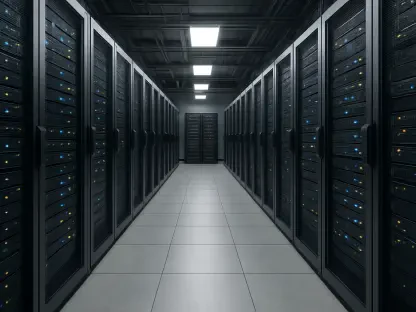In recent years, the world of networking has witnessed a revolutionary transformation driven by the incorporation of Artificial Intelligence (AI) into its framework. The influence of AI on networking and developer roles has become increasingly apparent, prompting industry leaders to reimagine their infrastructure and processes. Cisco Live, an annual event showcasing the latest advancements in networking, exemplifies this shift. The event underscores how AI is no longer just an auxiliary tool but a foundational element reshaping the very fabric of network management and development. Much like the advent of the internet in the 1990s, which brought about sweeping changes across all sectors, AI is now positioned to drastically alter networking through enhanced programmability, observability, and optimization. This change is not merely about adopting new technologies but fundamentally rethinking how networks operate and how developers engage with these systems.
The Transition from Static to Dynamic
AI’s role in transforming networking necessitates a departure from static hardware-based systems towards more dynamic, programmable platforms. This shift echoes the evolution seen in cloud-native infrastructure, where computing environments were revolutionized through technologies like containers and APIs. AI is now guiding a similar paradigm shift in networking. The transition involves enhancing traditional routers and switches into programmable entities capable of adapting to complex networking demands. Advancements such as Cisco’s DPU-enabled top-of-rack switches illustrate this change by integrating essential functionalities like firewalling and load balancing directly into the switch. This integration obviates the need for separate legacy hardware, streamlining network operations and reducing complexity. As more operations move from ticket-based management to automated, software-driven solutions, networking infrastructure becomes increasingly agile. This shift not only enhances efficiency but also sets the stage for more responsive network management, where changes can be intuitively implemented and adjusted as demands evolve.
Software-defined network services have emerged as another critical component in AI’s reshaping of networking. By delivering these services directly through network switches, traditional methodologies like using virtual machines or sidecar containers for managing network functions are being reevaluated. The ability to manage firewalls, segmentation, and network observability through code introduces unprecedented opportunities for automation and efficiency. This evolution to “GitOps” for network operations signifies a profound transformation from manual task management to code-based configurations. Such advancements underscore the value of harnessing AI for network management, allowing for more streamlined processes and reduced operational burdens. This dynamic shift towards programmable networks underscores the broader trend of integrating AI into the core functions of networking, setting the foundation for further innovation and growth.
AI in Network Debugging and Operations
The role of AI in enhancing network debugging and operations cannot be overstated. The introduction of AI-driven models dedicated to security and network operations highlights a significant leap forward in how networks are managed and troubleshot. Cisco’s Foundation AI Security Model and Deep Network Model serve as prime examples of AI’s capability to absorb and analyze vast amounts of telemetry data. This capacity empowers AI systems to offer insights and recommendations that are invaluable for maintaining network stability and reliability. While AI may not yet surpass human expertise in network engineering, its ability to process and synthesize large datasets makes it an indispensable asset. The scale and speed at which AI can operate provide a new layer of intelligence and accuracy in diagnosing and resolving network issues.
The convergence of AI models with network infrastructure also demands a reevaluation of traditional application-infrastructure boundaries. As AI systems require specialized models and hardware that are both space-efficient and highly programmable, developers and network architects are compelled to rethink their approach. This need for integration between application logic and inference hardware necessitates a comprehensive review of traditional network architectures. To ensure AI workloads perform optimally, there must be a clear understanding of how these systems interact with network components. Visibility into network bandwidth, latency, and the placement of inference hardware becomes increasingly critical. The specificity of large language model queries to latency and congestion highlights the need for careful planning and execution in deploying AI-driven network systems.
Implications for Developer Roles
As AI continues to integrate into networking, it poses both challenges and opportunities for developers in terms of programmability and infrastructure interaction. The concept of “NetDevOps” emerges as a vision that seeks to empower developers with direct programmability over the network. Historically, this has been hindered by non-standardized interfaces and proprietary equipment architectures. However, AI is progressively reshaping these constraints, introducing new standards and expectations around network management. AI is accelerating the need for network infrastructure teams and equipment providers to adapt to evolving paradigms. As AI continues to redefine the landscape, there is a growing demand for developers to possess a more intricate understanding of network operations and infrastructure. This fundamentally alters the traditional developer role, blending it with network engineering to create a more cohesive and integrated technology environment.
Moreover, AI’s potential to directly map workflows to network topology represents another frontier for developer involvement. Techniques such as pipeline parallelism, optimizing inference placement, and pre-caching model shards necessitate a reconsideration of infrastructure designs. These strategies hinge on a comprehensive understanding of data flow and network operations, emphasizing that performance considerations extend beyond mere computation to include seamless data transit within the network. Developers are increasingly tasked with leveraging these insights to drive efficiency, reflecting a shift towards a more granular engagement with underlying network mechanisms.
Shaping the Future of Networks
AI is playing a pivotal role in transforming networking by shifting from static hardware systems to flexible, programmable platforms. This change mirrors the cloud-native infrastructure evolution, marked by innovations like containers and APIs revolutionizing computing environments. AI is now steering a similar transformation within networking. Traditional routers and switches are being enhanced into programmable units, capable of adjusting to intricate networking needs. Innovations, like Cisco’s DPU-enabled top-of-rack switches, exemplify this change, embedding critical functions such as firewalling and load balancing into the switch itself. This negates the requirement for separate legacy hardware, simplifying network operations and reducing complexity. As operations transition from ticket-based management to automated, software-driven solutions, networking becomes more agile. This shift boosts efficiency and opens the door for more responsive network management, allowing adjustments to be made as demands evolve. The shift towards software-defined network services, combined with GitOps methodology, marks a profound change as AI becomes integral to networking’s core, paving the way for future innovation and growth.









